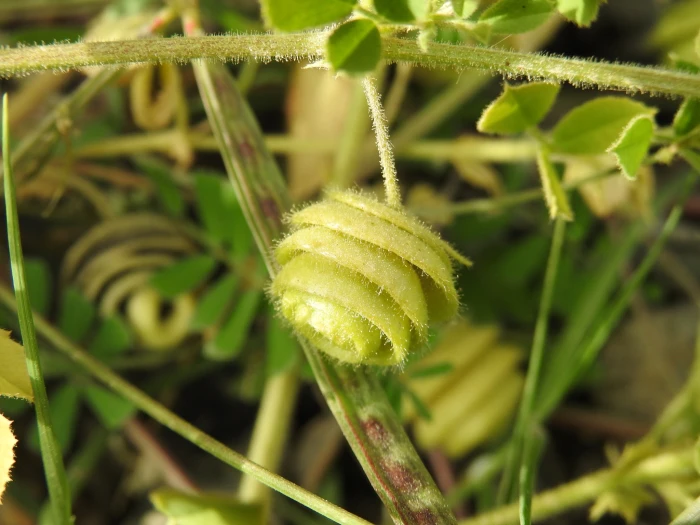Snail Medick
(Medicago scutellata)
Snail Medick (Medicago scutellata)
/
/

Yves Bas
CC BY 4.0
Image By:
Yves Bas
Recorded By:
Copyright:
CC BY 4.0
Copyright Notice:
Photo by: Yves Bas | License Type: CC BY 4.0 | License URL: http://creativecommons.org/licenses/by/4.0/ | Rights Holder: Yves Bas | Publisher: iNaturalist | Date Created: 2022-05-01T17:35:03-07:00 |



















Estimated Native Range
Climate Requirements
| • Precipitation | 21" - 25" |
| • High Temp. | 79°F - 91°F |
| • Low Temp. | 35°F - 45°F |
Summary
Medicago scutellata, commonly known as snail medick or shield medick, is an annual herb native to the Mediterranean basin, including regions with a Mediterranean climate characterized by hot, dry summers and cool, wet winters. It is adapted to a variety of habitats within this region, including grasslands, open woodlands, and disturbed sites. Snail medick typically grows to a height of 10-60 cm (4-24 inches) and has a sprawling growth habit. Its leaves are trifoliate, resembling a clover, and it produces small, coiled, snail-like seed pods after flowering. The flowers are yellow and bloom in the spring and early summer, providing a modest display.
Snail medick is valued for its nitrogen-fixing ability, which can improve soil fertility, making it useful in agricultural settings as a cover crop. It is also used in wildflower mixes for xeriscaping due to its drought tolerance. In cultivation, snail medick requires well-drained soils and thrives in full sun to part shade. It is generally low-maintenance but may require control measures to prevent it from becoming weedy. While it is not commonly grown for ornamental purposes, its ecological role in nitrogen fixation and soil improvement is notable.CC BY-SA 4.0
Snail medick is valued for its nitrogen-fixing ability, which can improve soil fertility, making it useful in agricultural settings as a cover crop. It is also used in wildflower mixes for xeriscaping due to its drought tolerance. In cultivation, snail medick requires well-drained soils and thrives in full sun to part shade. It is generally low-maintenance but may require control measures to prevent it from becoming weedy. While it is not commonly grown for ornamental purposes, its ecological role in nitrogen fixation and soil improvement is notable.CC BY-SA 4.0
Plant Description
- Plant Type: Herb
- Height: 0.5-1 feet
- Width: 1-2 feet
- Growth Rate: Moderate
- Flower Color: Yellow
- Flowering Season: Winter
- Leaf Retention:
Growth Requirements
- Sun: Full Sun, Part Shade
- Water: Medium
- Drainage: Medium, Slow
Common Uses
Bee Garden, Erosion Control, Low Maintenance
Natural Habitat
Native to the Mediterranean basin, including grasslands, open woodlands, and disturbed sites within regions with a Mediterranean climate
Other Names
Common Names: Snail Medic, Shell Clover, Shield Medick, Snail Trefoil, Snail-Clover, Medick
Scientific Names: Medicago scutellata, Cochleata scutellata, Medica scutellata, Medica scutellata, Medicago inermis, Medicago inermis, Medicago polymorpha var. scutellata, Medicago scutellaris, Pocockia scutellata
GBIF Accepted Name: Medicago scutellata